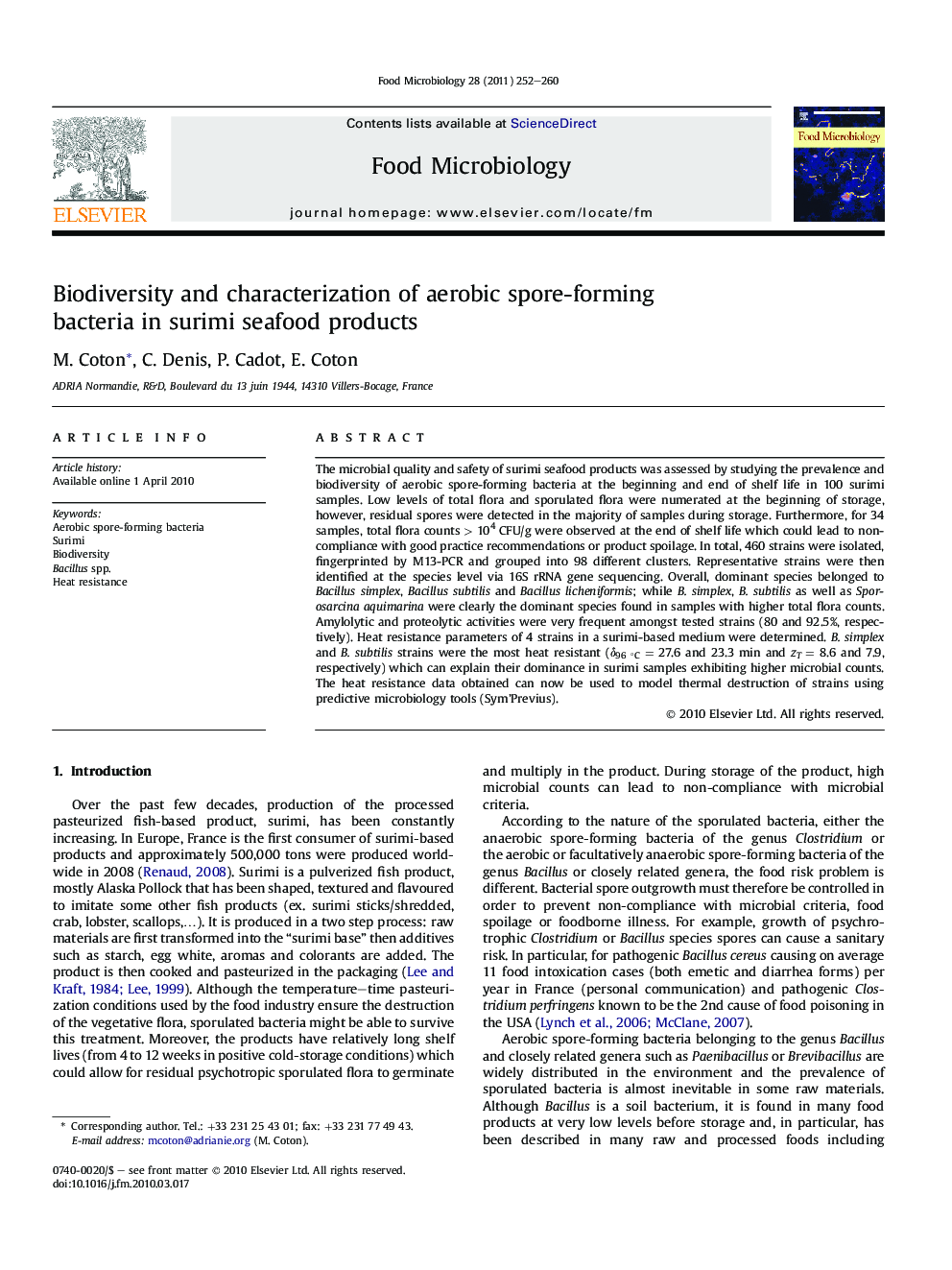| Article ID | Journal | Published Year | Pages | File Type |
|---|---|---|---|---|
| 4363239 | Food Microbiology | 2011 | 9 Pages |
The microbial quality and safety of surimi seafood products was assessed by studying the prevalence and biodiversity of aerobic spore-forming bacteria at the beginning and end of shelf life in 100 surimi samples. Low levels of total flora and sporulated flora were numerated at the beginning of storage, however, residual spores were detected in the majority of samples during storage. Furthermore, for 34 samples, total flora counts > 104 CFU/g were observed at the end of shelf life which could lead to non-compliance with good practice recommendations or product spoilage. In total, 460 strains were isolated, fingerprinted by M13-PCR and grouped into 98 different clusters. Representative strains were then identified at the species level via 16S rRNA gene sequencing. Overall, dominant species belonged to Bacillus simplex, Bacillus subtilis and Bacillus licheniformis; while B. simplex, B. subtilis as well as Sporosarcina aquimarina were clearly the dominant species found in samples with higher total flora counts. Amylolytic and proteolytic activities were very frequent amongst tested strains (80 and 92.5%, respectively). Heat resistance parameters of 4 strains in a surimi-based medium were determined. B. simplex and B. subtilis strains were the most heat resistant (δ96 °C = 27.6 and 23.3 min and zT = 8.6 and 7.9, respectively) which can explain their dominance in surimi samples exhibiting higher microbial counts. The heat resistance data obtained can now be used to model thermal destruction of strains using predictive microbiology tools (Sym’Previus).
